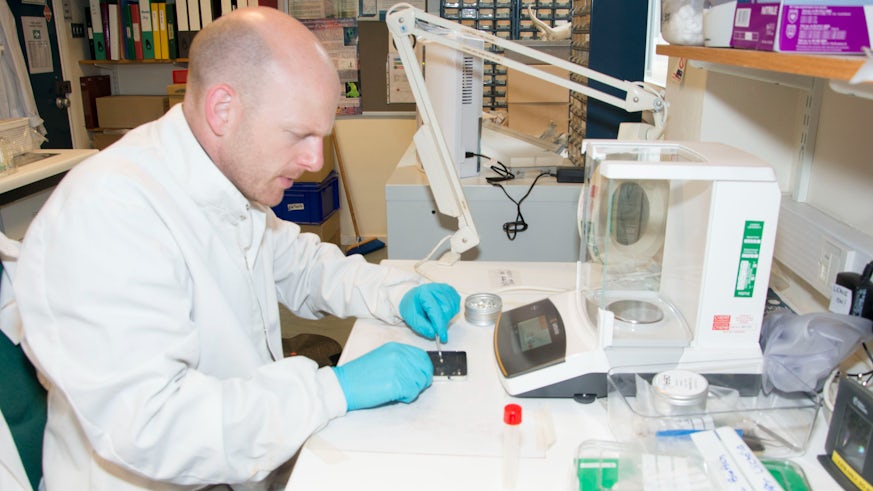Major new study investigates Britain’s Bronze Age collapse through throwaway picture of mobility, feasting and resilience
8 July 2021

Examining vast prehistoric ‘time capsule’ middens to better understand Britain’s Bronze Age collapse, in major new Arts and Humanities Research Council-funded project
Cardiff archaeologists are exploring how communities responded to economic and climatic crises at the end of the Bronze Age in Britain, examining evidence-rich middens using the latest scientific techniques.
The 30-month project will reveal the secrets locked within six incredibly evidence-rich sites holding hundreds of thousands of items from the Bronze Age to Iron Age transition, thanks to a £248,000 Arts and Humanities Research Council grant.
By focussing on the middens at two epicentres of activity in Wiltshire and the Thames Valley, the bioarchaeologists will use scientific advances recently employed on their high-profile research on the Mary Rose and Stonehenge to reveal much about life during the centuries of transition from the Bronze to Iron Age.
They will use the vast but largely untapped evidence from the middens that represent vast feasting events from c. 800BC to 400BC. The research will reconstruct patterns of human and animal movement and establish how these events were supplied in this transitional ‘Feasting age’. In turn, this will provide new evidence for the social and economic networks that developed and how these made communities resilient at a time of monumental change. Around 800BC Europe had suffered great upheaval as the climate deteriorated, economies collapsed, and the status of bronze, the cornerstone of long-distance trade networks, changed.
Multi-isotope analysis (strontium, sulphur, carbon, nitrogen and oxygen) will reveal where animals and humans came from and how agricultural production was maximised through different husbandry practices and landscape use.
Led by Dr Richard Madgwick and in collaboration with Dr Angela Lamb from the British Geological Survey, the Cardiff team also includes researcher Dr Carmen Esposito and MSc Archaeological Science postgraduate student Jerome Hancock.
Dr Madgwick explains the wider significance:
“In our Digital Age, we are aiming to unlock the secrets of this Feasting Age – the poorly understood transitional phase between the Bronze and Iron Age, in southern Britain. We are focussing on middens, vast feasting mounds, to understand how change at the end of the Bronze Age shaped society in southern Britain for centuries.
Like the 21st century economic crisis, this first millennium BC boom and bust caused great instability. In southern Britain, society did not immediately shift focus to iron, but rather to agricultural intensification and grand-scale feasting.”
Middens represent the very richest resource of material from British prehistory, holding hundreds of thousands of artefacts that are witness to diverse human activities, and provide the key to understanding socio-economic change.
Senior Lecturer in Archaeological Science, Dr Richard Madgwick regularly focuses his research on reconstructing human-animal relations. Recent projects range from identifying the origins of the Mary Rose crew in Tudor England, the impact of the Norman Conquest on diet in England to Feeding the Roman Army on the northern frontiers, alongside landmark research on feasting at prehistoric Stonehenge and Avebury.
